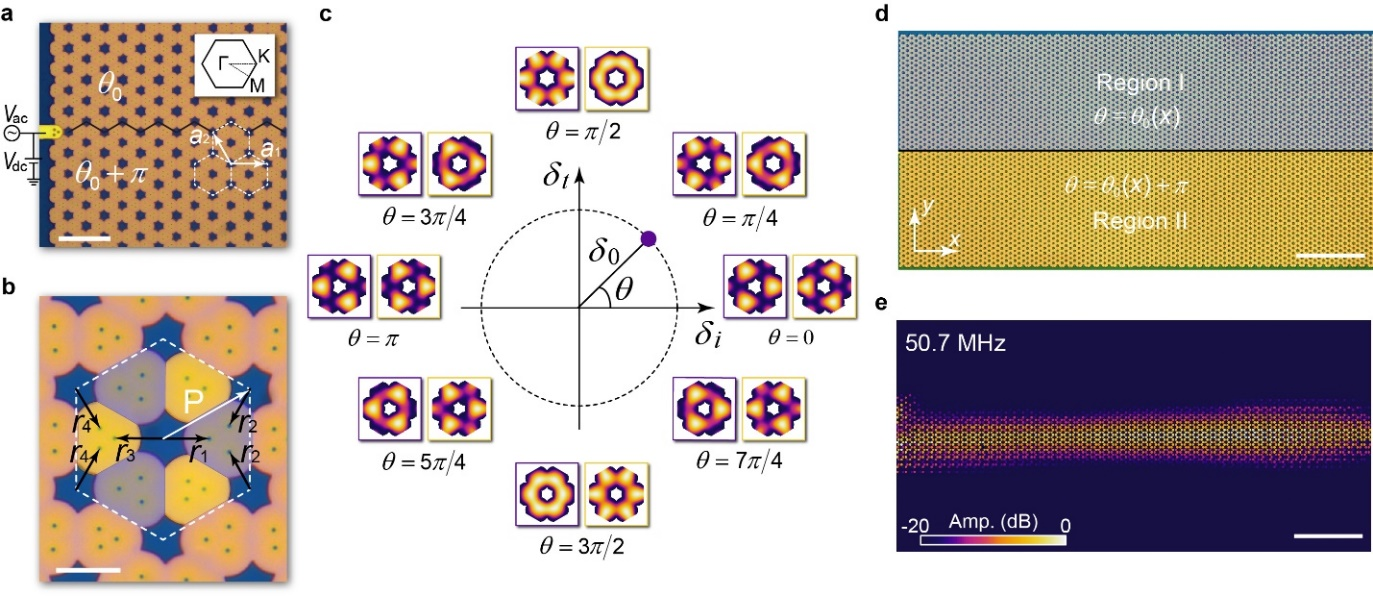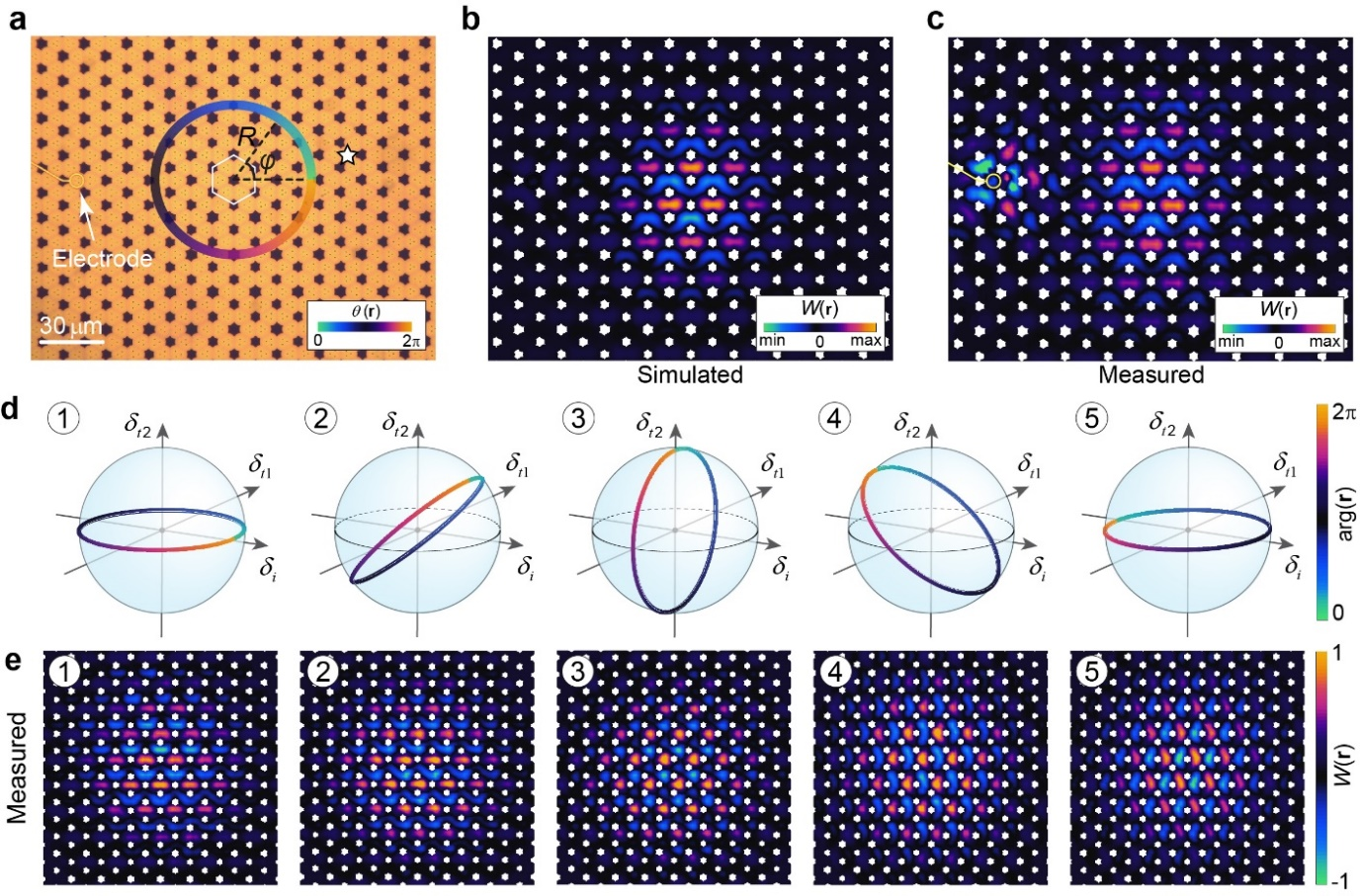Homepage
Home
Prof. Zhao has been awarded an ITF Guangdong-Hong Kong Technology Cooperation Funding Scheme (TCFS).
Congratulations!
Project Title: Development of a light-guided wet etching system for high-throughput fabrication of nano- and micro-structures in semiconductors
Principal Investigator: Prof. ZHAO, Ni
Project Amount: HKD 1,979,955
CUHK researchers discover a new degree of freedom in nanomechanical topological insulators and publish in Nature Nanotechnology
Researchers in Department of Electronic Engineering, The Chinese University of Hong Kong (CUHK) have discovered a new degree of freedom in nanomechanical topological insulators. In their paper titled “Nanomechanical topological insulators with an auxiliary orbital degree of freedom” published in Nature Nanotechnology on 19 April 2021, they introduced a synthetic orbital degree of freedom in nanomechanical topological insulators, which for the first time enables arbitrary manipulation of topological phases on a chip. They further experimentally realized topological phase transition between distinct topological edge states, and demonstrated zero-dimensional Dirac-vortex states by winding topological phase along the angular direction.
Topological insulators are a new phase of matter studied intensely in recently years, but only the spin degree of freedom has been exploited. The orbital degree of freedom constituting another fundamental attribute in crystals has seldom been investigated. This is because manipulation of orbitals in topological insulators is quite challenging as it requires careful consideration of crystalline symmetry. Researchers from Prof. Xiankai Sun’s group in Department of Electronic Engineering, CUHK have made a fundamental breakthrough and experimentally realized a nanomechanical topological insulator with an auxiliary orbital degree of freedom. This has enabled topological insulators with arbitrary polarization phases and also allows for their smooth transition on an integrated photonic or phononic platform. As a result, many exotic topological states with unconventional functionalities can be realized, facilitating the development of topological integrated circuits with enhanced functionality and scalability.
Figures 1a and 1b show optical microscope images of the integrated nanomechanical crystal, whose orbital states can be controlled by the geometric parameters shown in Fig. 1b. The geometric parameters form a 2D parameter space (Fig. 1c), where the orbital states are determined by angle θ. Varying θ gradually along the propagation direction (Fig. 1d) can result in adiabatic transition between different topological edge states with the orbital degree of freedom. Figure 1e shows the measured spatial distribution of elastic waves propagating along the interface between regions I and II in Fig. 1d, which verifies smooth transition between distinct topological edge states.
Figure 2a shows an optical microscope image of the device for demonstrating topological Dirac-vortex state. Figures 2b and 2c show the simulated and measured modal profile of the Dirac-vortex state, respectively. Figure 2d shows the concept of generalized 3D space to realize the Dirac-vortex states, and Fig. 2e shows the corresponding measured modal profiles of the Dirac-vortex states.

Fig. 1. Topological nanomechanical crystals with an auxiliary orbital degree of freedom and topological edge-state phase transition.

Fig. 2. Nanomechanical Dirac-vortex states.
Relevant information
- Jingwen Ma, Xiang Xi, Yuan Li, and Xiankai Sun, “Nanomechanical topological insulators with an auxiliary orbital degree of freedom,” Nature Nanotechnology 16 (5): 576–583, May 2021. https://doi.org/10.1038/s41565-021-00868-6
- Nature Nanotechnology (https://www.nature.com/nnano/) is an interdisciplinary journal that publishes papers of the highest quality and significance in all areas of nanoscience and nanotechnology.
- Prof. Xiankai Sun’s Photonic and Optomechanical Nanodevice Laboratory. http://www.ee.cuhk.edu.hk/~xksun/
Prof. Tsang has been awarded an ITF - Midstream Research Programme Funding of HK$4,998,739.5.
Congratulations!
Project Title: Integrated Spectrometer for Dynamic Optical Coherence Tomography
Principal Investigator: Prof. TSANG, Hon Ki
Co-Investigator: Prof. PUN, Kong Pang
Project Summary: This project will develop a fully integrated high speed solid-state infrared spectrometer for use in the emerging technique of dynamic optical coherence tomography (D-OCT). D-OCT is a non-invasive label-free imaging using changes between successive scans to image the 3D motion of blood cells in the microvasculature network. The project will also develop a new type of monolithically integrated solid-state spectrometer based on a silicon photonic integrated circuit, and the high speed multichannel data acquisition microelectronic circuits (Analog to Digital converters and transimpedance amplifiers) to enable the construction of a DOCT system that can provide high speed 3D image acquisition for use in dynamic optical coherence tomography.
CUHK Programme Exploration Days for 2021 JUPAS Applicants (PED 2021)
The Department of Electronic Engineering will organize online live event during the CUHK Programme Exploration Days to provide the opportunity for 2021 JUPAS Applicants to explore our undergraduate programme (JUPAS code: JS4434) and admission information. Details are as follows:
| Electronic Engineering Programme Talk | |
| Date: | 25 May 2021 (Tuesday) |
| Language: | Cantonese |
| Session 1 | |
| Time: | 10:00 - 11:00am |
| Speaker: | Prof. Pun Kong Pang |
| Session 2 | |
| Time: | 12:00nn - 1:00pm |
| Speaker: | Mr. Frankie Yip |
| Registration by 23 May 2021: | Meeting Registration - Zoom |
| CUHK Programme Exploration Days 2021: | CUHK Programme Exploration Days for JUPAS Applicants |
| Enquiries: | Miss Jasmine Yip (This email address is being protected from spambots. You need JavaScript enabled to view it./39438448) |
CUHK Programme Taster Fair
The Department of Electronic Engineering will organize online live event during the CUHK Programme Taster Fair 2021 to help JUPAS applicants and F.4 & F.5 students have a better understanding of our undergraduate programme (JUPAS code: JS4434). Details are as follows:
| Online Live Talk of Department of Electronic Engineering (10 April 2021) | |
| Topic: | Computer Vision AI - Face Recognition, Self-driving Car Perception and Beyond |
| Speaker: | Prof. LI Hongsheng |
| Time: | 10:00-10:45 am |
| Registration by 8 April 2021: | https://bit.ly/3eAVmGJ |
| CUHK Programme Taster Fair: | http://www.cuhk.edu.hk/adm/jupas/taster-fair/ |
For enquiries, please contact Ms Jasmine Yip (This email address is being protected from spambots. You need JavaScript enabled to view it.)

Subcategories
2025 Article Count: 5
2024 Article Count: 14
2023 Article Count: 17
2022 Article Count: 19
2015 Article Count: 12
2014 Article Count: 16
2013 Article Count: 20
2012 Article Count: 14
2011 Article Count: 10
2010 Article Count: 12
2009 Article Count: 20
2008 Article Count: 25
2007 Article Count: 2
2020 Article Count: 10
2021 Article Count: 15
2019 Article Count: 7
2018 Article Count: 8
2017 Article Count: 14
2016 Article Count: 20



